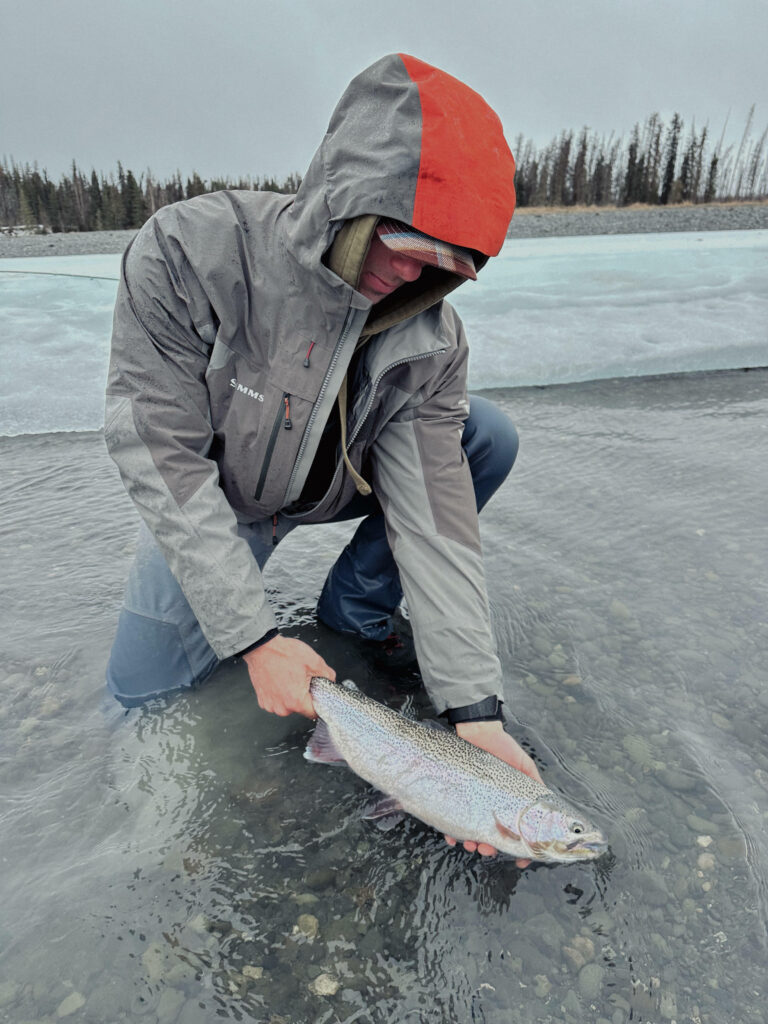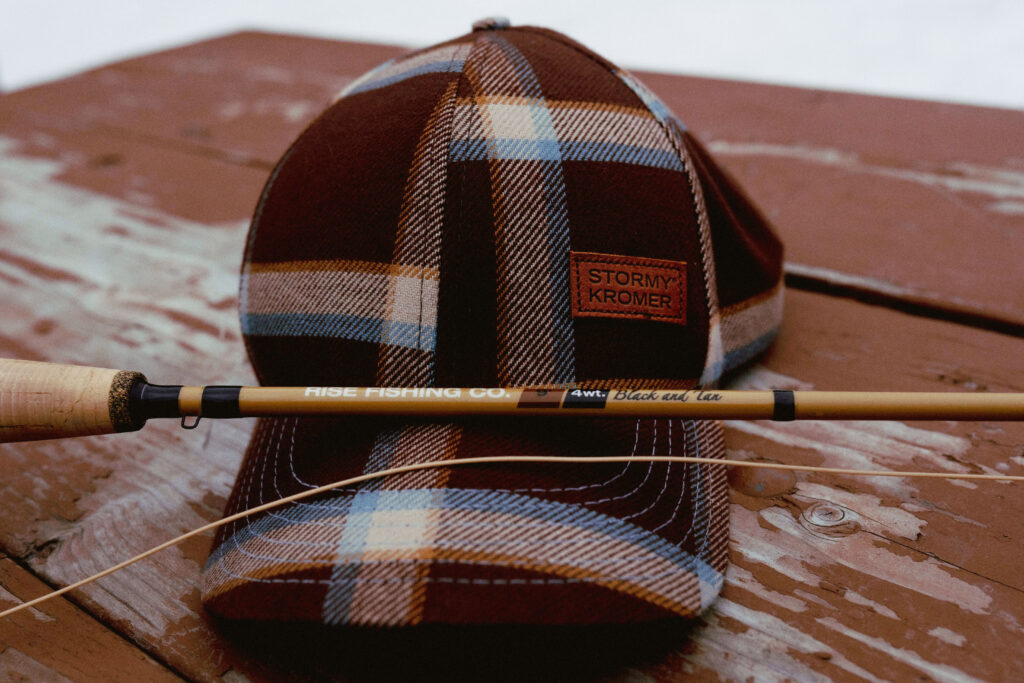In Alaska, as the snow melts, frozen rivers release ice, and slush flows down to the oceans and glacial rivers, the rainbow trout come out of their winter coma. The trout become ravenous, eating stoneflies, leeches, salmon fry, and any remaining flesh or eggs released from the frozen shoreline. Beanies are replaced with lighter wool caps, parkas are packed away and fly rods and reels are dusted off.
Gear Up and Reel In
The few who are brave enough to tolerate unpredictable weather patterns begin to venture out to the rivers looking for any fishable water. The rainbow trout are still slow-moving, but on the warmest April days, they can be seen sipping tiny hatching bugs off the surface film. A small swung soft hackle, size 22 Griffith’s gnat, or even a small leech pattern can be used to catch these colorful trout. Toward the end of April, as the trout begin to prepare for their spawn, the salmon fry begin their downstream migration toward the ocean.
They flood downstream in droves but are quickly ambushed by the trout and pushed toward the surface of the water, where they are then attacked on the surface by diving grey and white Terns. After April, the rainbow trout of Alaska begin to spawn the most popular rivers close to all fishing in order to protect the spawning rainbow trout. Fishing for them will resume in mid-June after Alaska’s breakup season ends and the rivers return to their summer flows. They will be following the King Salmon to their spawning grounds by then and trout fishermen of Alaska will spend the next 4 months chasing them around the rivers.

Photo features Oliver Anacan (@olleyeh) wearing The Flannel Adjustable Curveball








